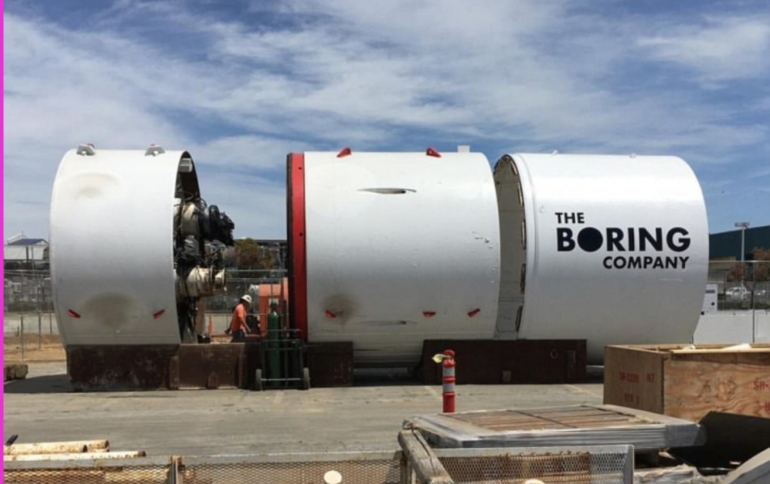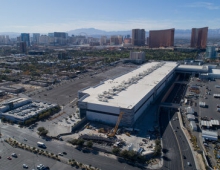
Elon Musk Unveils Los Angeles-area Tunnel
Elon Musk made a public appearance late on Tuesday to unveil the first tunnel completed by the underground transit venture "The Boring Company" he launched two years ago as an ambitious remedy to Los Angeles’ traffic.
Musk touted the newly finished 1.14-mile (1.83 km) tunnel segment as a breakthrough in low-cost, fast-digging technology being pioneered by his tunneling firm, the Boring Company.
Reporters and invited guests took some of the first rides in the albeit bumpy subterranean tube.
Musk has advertised the proof-of-concept tunnel as a first step toward developing a high-speed subterranean network capable of whisking vehicles and pedestrians below the “soul-destroying” street traffic of America’s second-largest city at up to 150 miles per hour.
The new tunnel was excavated along a path that runs not through Los Angeles but beneath the tiny adjacent municipality of Hawthorne.
In May, The Boring Company gave the world a preview of the Hawthorne tunnel, posting a fast-forward video of its interior shot by a camera traveling the length of the cylindrical passageway, which measures about 12 feet (3.7 m) in diameter.
On Tuesday, Musk put the total price tag for the finished segment at about $10 million, including the cost of excavation, internal infrastructure, lighting, ventilation, safety systems, communications and a track.
By comparison, he said, digging a mile of tunnel by “traditional” engineering methods costs up to $1 billion and takes three to six months to complete.
Musk boasted of several cost-cutting innovations, including higher-power boring machines, digging narrower tunnels, speeding up dirt removal, and simultaneous excavation and reinforcement.
Musk did not say how long it took to burrow his new tunnel, which ended up running short of the 2-mile easement his company originally requested for the project.
When fully operational, the “loop” system as Musk envisions it will consist of passenger- and automobile-carrying platforms called “skates” that can zip through the tunnels by way of electric power once they descend into the underground network.
Autonomous, electric vehicles could be lowered into the system on wall-less elevators, which could be placed almost anywhere cars can go. The cars would have to be fitted with specially designed side wheels that pop out perpendicular to the car's regular tires and run along the tunnel's track. The cost for such wheels would be about $200 or $300 a car, Musk said.
A number of autonomous cars would remain inside the tunnel system just for pedestrians and bicyclists. Once on the main arteries of the system, every car could run at top speed except when entering and exiting.
The cars would have to be autonomous to work in the system but not Teslas specifically, and they would have to be electric because of the fumes from gas, Musk said.
















